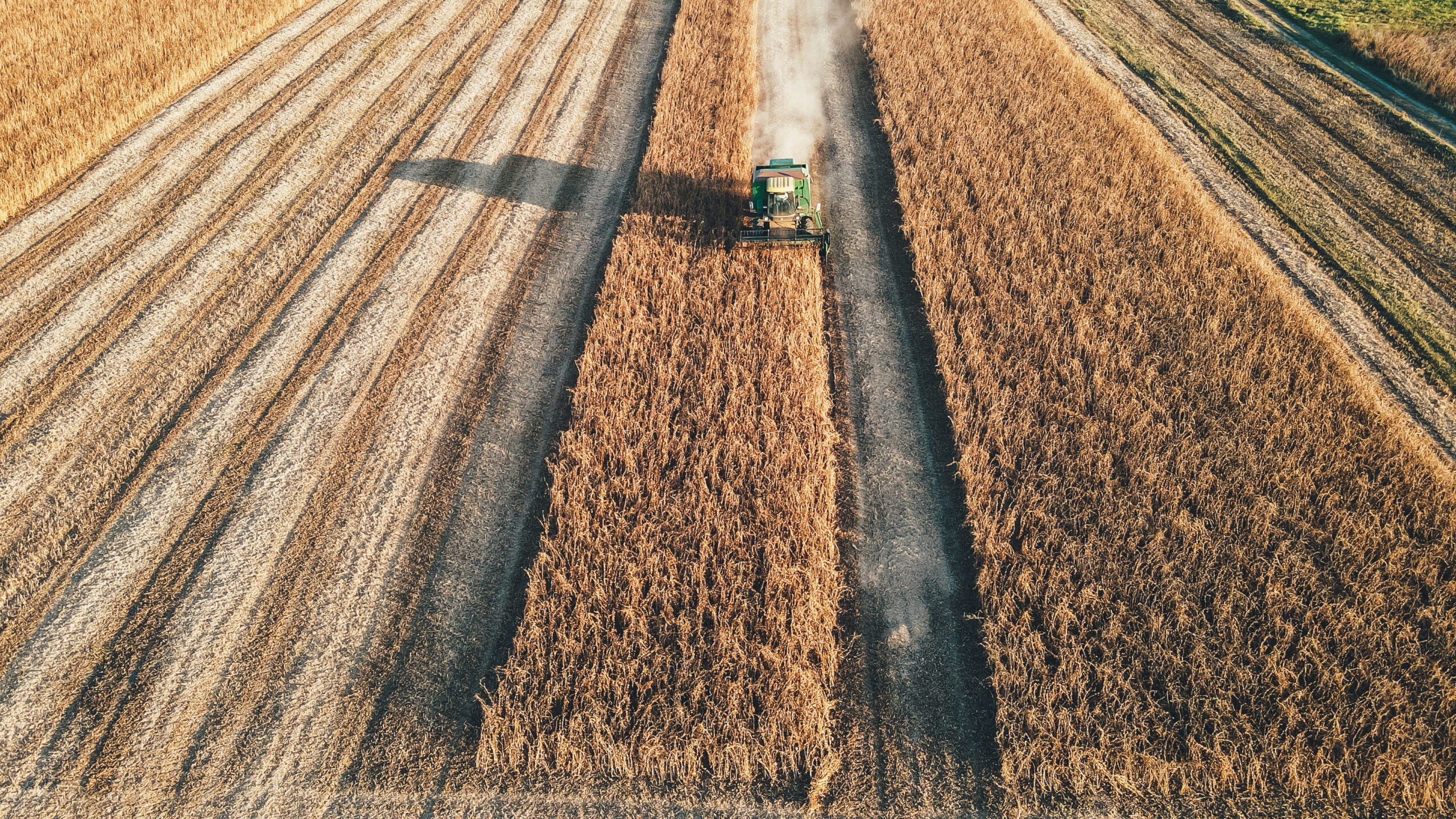Resource
War in Ukraine: Tech to the aid of devastated agriculture
November 15, 2023
By Clara Galtier

In Chernihiv, Ukraine, near the Belarusian border, Sergey needs $2,500 to buy fuel and fertilizer. The war emptied its treasury. The price of diesel has soared and there has been a drop in yield due to not being able to sow at the optimal time due to the Russian occupation. South of Kiev , Oleksandr rebuilt his farm ravaged by fighting. He grows wheat, corn and sunflowers there. But columns of enemy tanks have crushed most of his crops, and his machines, pulverized by rockets, are in pieces. “ Help us, please, after all, we are the ones who feed the world!” » Hundreds of Ukrainian farmers appealed for help on Farmerhood, a platform dedicated to supporting small farms in war-affected regions.
“ We collect donations from individuals and agri-food companies around the world to redistribute them to farmers ,” explains Andrew Mullin, of the Canadian company EarthDaily Analytics, specializing in satellite data, at the initiative of Farmerhood. The firm has created a coalition of support bringing together around fifty partners from the private sector, NGOs and governments. Seeds, fertilizer, fuel, assistance to repair equipment: donors have real-time access to the needs of Ukrainians thanks to an interactive map. Agriculture is an economic pillar for Ukraine, a major player in international raw materials markets, especially cereals . In 2021, the sector provided employment for 14% of the population and represented 41% of exports (9% of GDP).
It is to support this essential national production that Farmerhood today covers nearly 1 million hectares out of the country’s 33 million arable lands. More than 300 farms have so far been supported by the charitable fund.
For two years, farmers have been on the front lines of the war. Land contaminated by Russian mines, infrastructure demolished by the fighting, finished products looted or destroyed… “ Ukrainian farmers have suffered losses of at least 40 billion dollars ,” said
MP Dmytro Solomchuk in October. The FAO said in May that 90% of agricultural businesses have lost income.
Maritime blockade
Despite the invasion, agricultural exports fell by only 15% in 2022 thanks to the Black Sea corridor negotiated by the United Nations – Russia withdrew from the agreement in July. Farmers are facing soaring transport costs , four to six times higher than pre-war prices, forcing many to reduce their plantings. Production costs for livestock and crops jumped 64% and 72%, respectively. According to industry players, the maritime blockade could lead to a reduction of between 20% and 30% in cereal production and potentially bankruptcies in 2024. This year, land sown with cereals is expected to fall to 10.2 million hectares, compared to 16 million in 2021.
In March 2022, the EU released an aid program of 330 million euros so that professionals can better stock up on fuel and seeds, a program mainly captured by large producers. This does not prevent them from suffering heavy losses, such as 280 million dollars last year for the grain producer and trader Nibulon JSC. Based in the port city of Mykolaiv, the company has lost access to 25,500 hectares out of the 76,500 it owns.
The Ukrainian agricultural sector is made up of both very large structures like this one, around 180 agro-holdings, and a host of small farms, almost 4 million micro-farms. If big companies are getting by, supported by loans financed by Kiev , 25% of small farmers have stopped or reduced their activity, according to the NGO International Rescue Committee. Some farmers are forced to burn their crops to more easily detect cluster
bombs and other Russian devices that threaten to explode and make night work impossible. If drones can identify explosives , craters and fires, the damage caused by combat is not limited to the surface.
This is the other side of the aid provided by the coalition: access to high technology. EarthDaily Agro collaborates with Agrilab, a company in Ukraine that develops digital solutions dedicated to precision agriculture. The two allies provide farmers with satellite fertilization monitoring data to help them maximize the potential of their crops. Observation from space is used to digitize areas impacted by military operations .
Ecological disaster
“ The war will cause long-term damage to Ukrainian soil ,” warns Yaroslav Boiko, agronomist and director of Agrilab. Part of the land will be unsuitable for agricultural use because of potholes, tons of rotting scrap metal, carcinogenic waste, heavy metals and chemicals. »
An environmental and economic disaster whose damage is still difficult to quantify, in a country which includes a quarter of the most fertile areas in the world, the chernozems, rich in humus, organic matter suitable for agriculture . Likewise, explosions do not only pollute the air. Harmful substances return as precipitation and accumulate in the soil, leading to their toxicity. The sulfur contained in munitions, on contact with rain, mutates into sulfuric acid and burns the millions of living organisms which form the upper layer of soil.
An agrochemical examination makes it possible to determine changes in soils, before and after their alteration. Based on the data from these analyses, the company develops an algorithm to restore soil fertility or mitigate lesions.
This article originally appeared in French on LeFigaro. For further details and the full article, please visit the original post on LeFigaro.